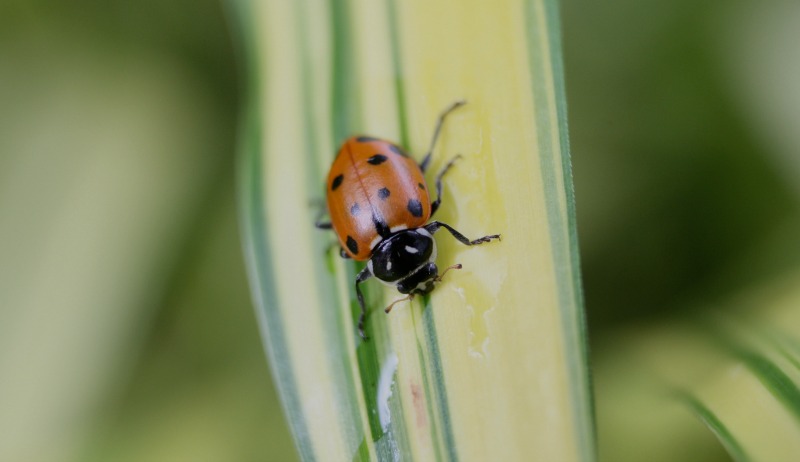
Most gardeners know that ladybugs are good for their garden. These pretty little bugs eat scores of pest insects, including aphids, mealybugs, small caterpillars, whiteflies, mites and many others. There are almost 500 different species of ladybugs in North America, and depending on the species, they can be red, gray, black, orange, pink, cream, burgundy or yellow. Some species are spotted, while others are mottled, striped or have no markings at all. But a particular ladybug’s outward appearance isn’t the only thing that’s dependent on its species. So, too, are the particular pests it eats.
Regardless of which species of ladybugs you have on your hobby farm, encouraging them to do their best work should always be on your mind. To help you keep these pest-munching good bugs around, here are five tips for luring in ladybugs.
1. Have Plenty of Pests
It might seem a bit counterintuitive at first, but the best way to encourage good bugs is to have plenty of bad bugs hanging around. Gardens regularly blanketed with pesticides have very few ladybugs because there simply isn’t enough food available for them to stick around. Plants are very tolerant of most of the sap-sucking pests that ladybugs like to dine on, so stop killing every aphid, whitefly and mite you come across. Give the ladybugs some time to move in, and you’ll find they make short order of these pests and naturally keep their numbers at a tolerable level.
2. Stop Spraying—Even the Organic Stuff
This is a natural extension of tip No. 1 because when you spray pesticides, not only do you wipe out the prime protein source for your ladybugs, you also risk wiping out the ladybugs themselves. Yes, many organic pesticides are labeled as being safe for use around beneficial insects, but most of the time that means they’re safe for use around adult beneficial insects, not their larvae. Ladybug larvae are soft-bodied insects, just like the aphids, caterpillars and other pests you’re targeting with that spray, and they’re just as susceptible to the damaging effects of insecticidal soaps, horticultural oils and other products as the pest insects are.

3. Feed Ladybugs Carbs
A good part of a ladybug’s diet consists of the protein found in the insects they eat, but these good bugs (and many others) also need a source of carbohydrates. In fact, many ladybug species can’t reproduce without it. These carbohydrates, of course, are sourced from the sugars in plant nectar. But, ladybugs don’t have the same mouthparts as bees and butterflies, so the best nectar sources for them are tiny flowers with exposed nectaries. Members of the carrot family (including dill, Zizia, cilantro and fennel) as well as members of the aster family (including daisies, yarrow, black-eyed Susans and sunflowers) are particularly good at luring in ladybugs.
4. Give Them Diversity
Much research has shown that landscapes filled with many different species of plants have a broader diversity of ladybugs and other beneficial insects than landscapes with just a few different plant species present. Interplant your vegetable garden with flowering herbs, plant flowering perennials in between shrubs in your foundation plantings, and incorporate plenty of annual flowers all over your yard. The more diversity of plant structure, flower shape, flower color and bloom time you have, the better.
5. Remember Ladybugs In Winter
All of North America’s ladybug species spend the winter outdoors; it’s only the introduced Asian multicolored ladybug that tries to overwinter inside our homes. To encourage a good population of native ladybugs in your garden, leave perennials, grasses and other plants stand through the winter, instead of cutting them down in the fall. Many species of ladybugs overwinter in their hollow stems or in the debris that collects at their base. Also refrain from raking up every last leaf. Ladybugs love to take shelter under fallen leaves for the winter so do your garden cleanup in the spring, instead of the fall.
Use these five tips for luring in ladybugs and get a grip on pests, naturally! For more tips on luring in ladybugs, check out this post. It’s about a book that will teach you how to encourage and support many different types of beneficial insects in your garden.




